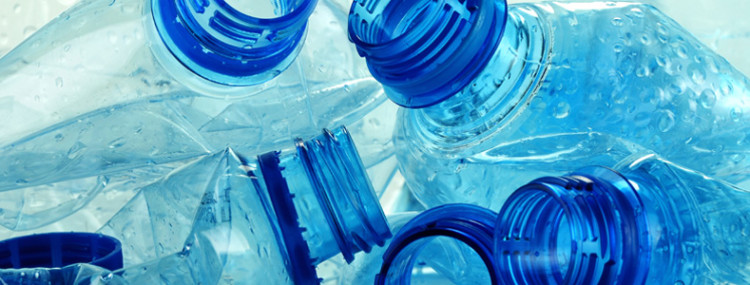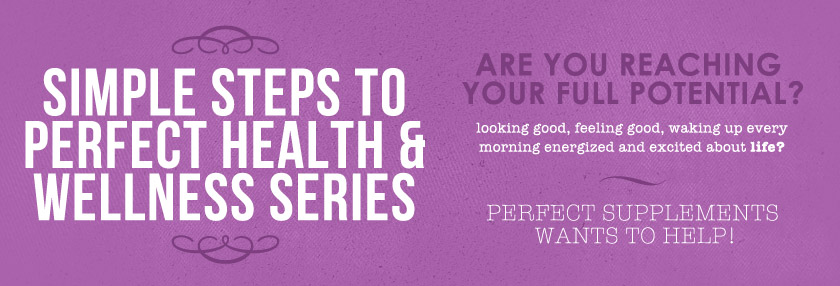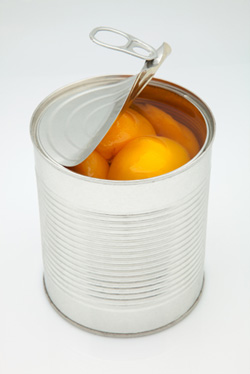
10 Toxic Chemicals in Your Environment That Can Make You Sick

2014 is going to be the year you take control of your health and feed your body what it needs to be healthy, radiant and bounding with energy. It all comes down to the simple choices you make throughout the day. With healthy decisions, feeling great and losing weight happen naturally.
In our Simple Steps to Perfect Health & Wellness Series, we will be presenting healthy lifestyle suggestions based on 20 years of personal research, to help you make informed choices that will have you feeling and looking terrific. The series will cover a variety of topics including diet, exercise, stress reduction, mental health, relationships, and more. We wish you a Perfectly Healthy New Year!
10 Toxic Chemicals in Your Environment That Can Make You Sick
Moving along in the Avoiding Toxins section of our Perfect Health and Wellness Series… we’ve already looked at toxic ingredients in our food, and how to avoid those nasty GMOs. Unfortunately, toxic substances are not limited to our food, they are also found in our water, our homes, and our personal care products.
In September, 2013, the American Congress of Obstetricians and Gynecologists and the American Society for Reproductive Medicine – said in a joint statement that,
“toxic chemicals in our environment harm our ability to reproduce, negatively affect pregnancies and are associated with numerous long-term health problems.”(1)
Yes, it has taken mainstream medicine a long time to admit what us natural folks have known all along… we are being poisoned by massive amounts of toxic chemicals in our environment. According to Time Magazine,
A recent bio-monitoring survey by the Centers for Disease Control (CDC) found traces of 212 environmental chemicals in Americans — including toxic metals like arsenic, pesticides, flame retardants and even perchlorate, an ingredient in rocket fuel. (2) Rocket fuel?!?
What Can We Do to Protect Ourselves from Toxic Overload?

The Environmental Working Group and Time Magazine agree on several common household toxins that you will probably want to reduce your exposure as much as possible.
1. BPA – synthetic estrogen
found in plastics PC & #7, and the lining of most food cans
2. Phthalates
linked to lower sperm count & birth defects in the male reproductive system – some are already banned in children’s toys – avoid plastic food storage ( PVC and #3), plastic toys, and “fragrance”. Find phthalate-free personal care products at EWG’s Skin Deep Database
3. Herbicides & Insecticides
on your food, in your drinking water, and in your yard. Your family’s exposure can be reduced by:
- Buying organic produce, particularly the “dirty dozen”
- Filtering your drinking water. At our house, we use a 10 stage water filter.
- Avoiding all toxic pesticides and herbicides in your home and yard. In your home, try spraying areas with a 50/50 solution of water and vinegar. Reduce weeds by allowing grass to grow longer. In the vegetable garden, try companion planting. In our lawn, we just let the weeds grow… from far away, it all looks green.
4. Perfluorooctanoic Acid (PFC / PFOA)
Found to cause reproductive abnormalities in animal and human studies. Avoid non-stick cookware (try cast iron) and stain-resistant coatings on clothing and furniture.
5. Bromine Fire Retardants (i.e. PBDE & DECA)
Associated with learning and hearing deficiencies. Found in electronics, foam furniture and carpet padding. Avoid buying PBDE electronics and foam furniture with bromine fire retardants. Vacuum with a HEPA filter. Do not reupholster foam furniture. Check out this PBDE Guide.
6. Parabens, Oxybenzone & BHA
Chemicals found in cosmetics and personal care products. Reference EWG’s Skin Deep Database for non-toxic alternatives.
7. Glycol Ethers (2-butoxyethanol (EGBE) and methoxydiglycol (DEGME)
Found in paints, cleaning products, and cosmetics. Check out EWG’s Guide to Healthy Cleaners. Their Cleaners’ Hall of Shame was also extremely informative.
8. Flouride
Yes, that’s right, the stuff you use to brush your teeth (I have used a flouride-free toothpaste for 7 years, and, “Look Ma, no cavities!” (I know. I am showing my age with that quote.)
The American Dental Association advises that children under 2 should not use fluoride toothpaste.
Why? Because it is TOXIC!
If it is toxic for 2 year olds, I don’t want to use it either. By the way, it is also ADDED to many municipal drinking waters… yeah, crazy, right? In 2013, the citizens of Portland Oregon voted to prevent the addition of flouride to their drinking water (Portland – You Rock!)
9. Arsenic & Lead
Can be found in your drinking water.
10. Perchlorate
This is the rocket fuel mentioned earlier; it is probably in your drinking water, and it competes with the nutrient iodine, which controls thyroid balance. It is a good idea to supplement with a natural superfood that contains iodine, such as Perfect Aquatic Greens, Spirulina & Chlorella.
One of the best ways to protect your family from toxins is to filter your drinking water.
We use a 10 stage water filter.
Two More Simple Suggestions to Reduce Your Toxic Load

- Open the Windows – Even Just Five Minutes Per Day Can Significantly Reduce In-Home Air Pollution
- Invest in a Few Air Purifying House Plants – Your goal should be approximately one 12″ pot for every 100 – 200 square feet. Don’t worry about not having a green thumb – there are many super easy-to-care-for air purifying house plants, such as Peace Lilies, Spider Plants, and Aloe Vera (if they can survive in my house, they can survive in yours).
What steps do you take to reduce your family’s exposure to toxic chemicals?
Resources:
1. Environmental Working Group
2. Time Magazine
Continue Reading Our Perfect Health & Wellness Series:
- Top Ten Simple Steps to Perfect Health & Wellness
- Eight Most Nourishing Foods – Premium Fuel for Your Amazing Life
- Ten Worst Industrial Food Ingredients
- Top Tips For Healthy Eating, Check Your Perfection At The Door
- The #1 Habit to Improve the Quality of Your Food
- 4 Simple Steps to Avoid GMOs
- Do NOT Exercise for Weight Loss
- What’s Your Style? A Review of 8 Exercise Routines
- Shattering Exercise Myths With Fitness Expert Shawn Stevenson
- Are Cold Breakfast Cereals Poisonous? 5 Simple Whole Food Breakfast Recipes
- Drop the Junk Food: 10 Quick & Satisfying Whole Food Snack Ideas

Comments are disabled for this post